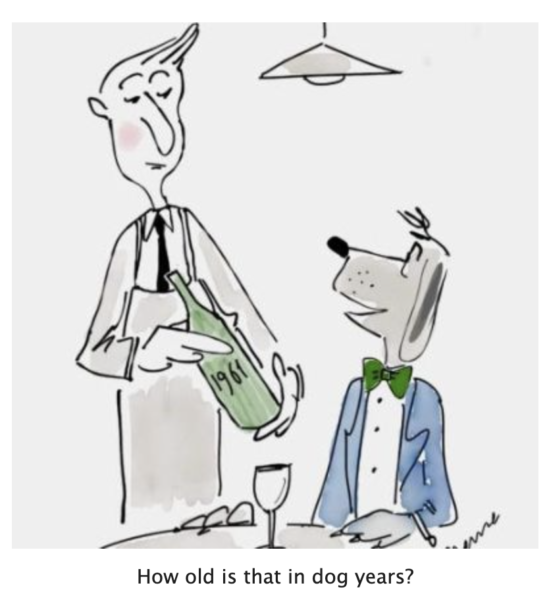
What is wine made of? It’s not an easy question to answer. One could say fresh fruit, I suppose, but that will hardly do, since in the fermentation vat fruit undergoes a complete and total transformation — its solid parts (skin, pulp and seeds) forced to surrender their color, flavor and various organic compounds to the liquid part, which, having once been poor in all these elements, is thus made rich.
The despoiled solids are now good only for the compost heap, which is where they generally wind up, while the newly ennobled must, as it’s known, given an extended lease on life by the stabilizing presence of alcohol, is now in a position to be worked upon by time.
You could say that everything that has transpired up to this point is mere prologue. An individual wine’s real story, conceived of as a kind of narrative arc from youth to old age, starts where time enters the picture.
The first village vintners understood the value of letting newly-made wine rest in a cool, dark, still place for weeks or months. Qvevries, those large, womb-shaped clay pots in use in the Caucasus since the neolithic era, are ideal for encouraging the three most important effects involved in maturing wine: clarification, tannin agglomeration and incremental oxygenation.
Clarification simply refers to undissolved solids gradually falling out of solution. This happens relatively quickly. In young wine, tannin molecules (responsible for sensations of texture) are small and discrete, with a raspy feel. With time, these molecules glom together, making larger units that convey a smoother, more comfortable tactility. The slow, measured ingress of oxygen molecules facilitated by a sealed but not perfectly airtight container gradually makes wine more expressive, generous, and mellow.
In the days before the debut of the glass bottle and cork system, all wine was sold in barrel. The critical element to keeping wine fresh under these conditions was keeping the cask fully ‘topped up’ with wine. This technique excluded excessive (and thus damaging) inflows of oxygen and maintained an environment conducive to a safe maturation.
A few progressive, elite Bordeaux estates began offering wine in cork-sealed bottles toward the end of the 17th century, selling it early in its life cycle, with the idea that customers would assume responsibility for bringing the wine to peak of maturity by holding it in their personal cellars for years or even decades. This practice is a primary source of the maddeningly persistent meme that old wine is the best wine. But is it?
It depends, first of all, on your own taste. If the characters that develop in mature wine (savory, balsamic elements combined with a caressing texture and a kind of dreamy somnolence) appeal to you, then yes. If you’re excited by energy, verve and primary fruit flavors, less so. Of course, most of us, including your correspondent, take pleasure in both. Like people, wine can be too young or too old for a given purpose.
Is time something wine is made of? Or is it more correctly thought of as an agent of nature, a technology, a even a spell? Maybe it’s time we consulted the philosophers.